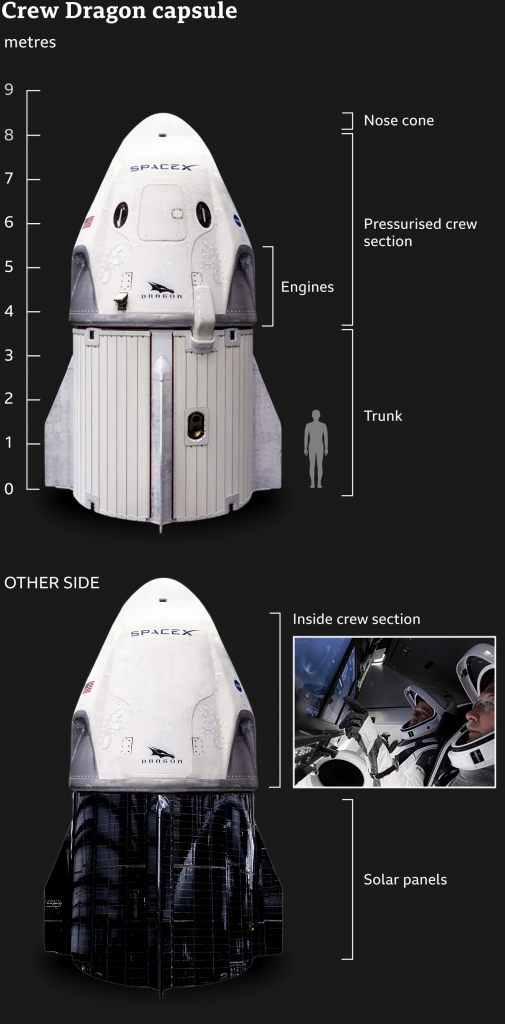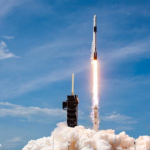NASA astronauts Bob Behnken and Doug Hurley dock SpaceX’s Crew Dragon spaceship to the International Space Station

Last Saturday 30 May 2020, Elon Musk achieved his fundamental goal of human spaceflight for his pioneering company SpaceX.
The Crew Dragon spacecraft carried Nasa astronauts Doug Hurley and Bob Behnken into orbit for a rendezvous with the International Space Station (ISS).
But before the company is able to end a nine-year launch drought in the US by successfully launching two astronauts, Crew Dragon evolved from an earlier design, called Dragon 1, which launched 20 times on missions between May 2012 and March 2020 to deliver cargo to the ISS.
Musk unveiled the seven-seat Crew Dragon concept during an event at SpaceX’s headquarters in Hawthorne, California in May 2014.
Similar to Dragon 1, the crewed version is a capsule design, making it more fairly similar to the Apollo command modules that carried astronauts to the Moon than the winged space shuttle concept, which was conceived to carry both a crew and a large payload.

The Crew Dragon has 16 Draco thrusters used to maneuver the vehicle in orbit. Each Draco can produce 90 pounds of force in the vacuum of space.
One of the biggest features of Crew Dragon is the touchscreens on the inside. It is designed to not just to be very functional, but with user experience in mind.

The two Nasa astronauts, Bob Behnken and Doug Hurley have been working with SpaceX to get the vehicle ready for its first crewed flight. Hurley admits that the “glass cockpit” took a bit of getting used to.
Hurley also comments: “The capsule design is a safer design than a winged vehicle under most circumstances.”
Behnken adds: “The space shuttle was 10 times larger in terms of mass than you needed to get into low-Earth orbit… flying on a smaller rocket, really focused on the crew mission… provides another level of safety.”
But in case anything goes wrong on the pad or during the climb to orbit, SpaceX has designed an innovative abort system for the capsule. The launch escape system (LES) consists of a set of SpaceX-designed SuperDraco engines that fire in the event of an emergency to propel the capsule and its crew safely away from the rocket, says John Federspiel.
“This is a dream come true for me and everyone at SpaceX,” expressed by Elon Musk, the chief engineer at SpaceX.
“It is the culmination of an incredible amount of work by the SpaceX team, by NASA, and by a number of other partners in the process of making this happen. You can look at this as the results of a hundred thousand people roughly when you add up all the suppliers and everyone working incredibly hard to make this day happen.”






